Philippine President Ferdinand Marcos Jr has called for more urgency in negotiations on a code of conduct for the disputed South China Sea, as he accused China of “harassment and intimidation” in the waterway.
Marcos Jr told leaders of the Association of Southeast Asian Nations (ASEAN) and Chinese Premier Li Qiang, Marcos that substantive progress on the code was necessary and all parties must “be earnestly open to seriously managing differences” and reducing tension.
“There should be more urgency in the pace of the negotiations of the ASEAN-China code of conduct,” Marcos said on Thursday, according to a statement from his office.
The idea of a maritime code was first agreed between China and ASEAN in 2002, but substantive negotiations on its content did not begin until 2017.
“It is regrettable that the overall situation in the South China Sea remains tense and unchanged. We continue to be subjected to harassment and intimidation,” the statement added.
The row between China and the Philippines in the South China Sea has turned increasingly violent in recent months, with the two sides trading allegations of intentional boat rammings, and Manila accusing Chinese coastguard personnel of using water cannon against its troops and engaging in fist fights with spears and knives.
In August alone, the two countries reported six confrontations at air and at sea in the contested waterway.
Five of them took place at or near Scarborough Shoal and the Sabina Shoal in the Spratly Islands, an area that is within the Philippines’ 200-nautical-mile (about 370 kilometres) Exclusive Economic Zone (EEZ) but where China claims sovereignty.
The confrontations have taken place despite renewed efforts by Beijing and Manila to better manage their maritime dispute following a violent fight in June in which a Filipino sailor lost a finger.
China claims the Philippines is to blame for the confrontations, accusing Filipino troops of “illegally” intruding into its territory. In September, it said its ties with the Philippines were “at a crossroads” and urged Manila to “seriously consider the future” of their relationship.
The escalating tensions have threatened to draw in the United States, which has a mutual defence treaty with the Philippines and has promised to come to Manila’s aid in the case of any armed third-party attacks against Filipino troops. These include on coastguard personnel, aircraft or public vessels “anywhere” in the South China Sea.
Here’s what you need to know about the tensions in the strategic waterway:
Who claims what?
China claims sovereignty over nearly all of the South China Sea, via a vague, U-shaped nine-dash-line that overlaps with the EEZs of Brunei, Indonesia, Malaysia, the Philippines, Taiwan and Vietnam. EEZs are areas of the ocean, extending 200 nautical miles beyond a nation’s shore, where that state has the right to explore and exploit resources.
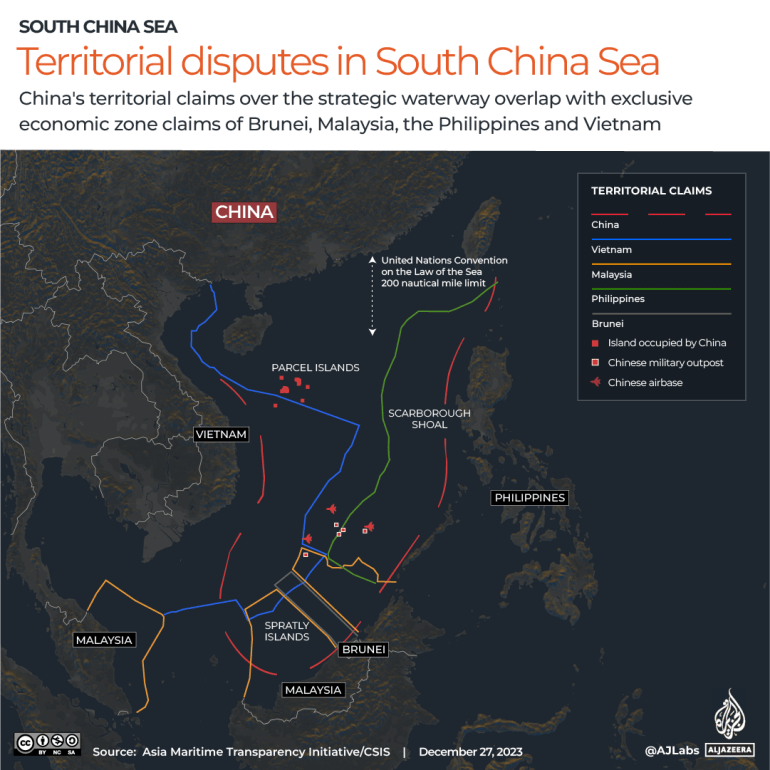
In the northern parts of the South China Sea, China, Taiwan and Vietnam claim sovereignty over the Paracel Islands, although Beijing has controlled them since 1974. In the southern areas, China, Taiwan, and Vietnam each claim all of the approximately 200 Spratly Islands, while Brunei, Malaysia and the Philippines claim some of them.
In 2016, a United Nations tribunal, following a suit brought by the Philippines, ruled that China’s nine-dash-line had no legal basis. But Beijing has ignored the ruling and continued to reclaim and militarise reefs and submerged shoals in the waterway to advance its expansive claims.
According to the Center for Strategic and International Studies (CSIS), a US-based think tank, China has 20 outposts in the Paracel Islands and seven in the Spratlys.
Vietnam, meanwhile, has 51 outposts spread across 27 features, while the Philippines occupies a total of nine features in the Spratly Islands. Thitu Island, the largest, is home to the only Philippine airstrip in the Spratlys.
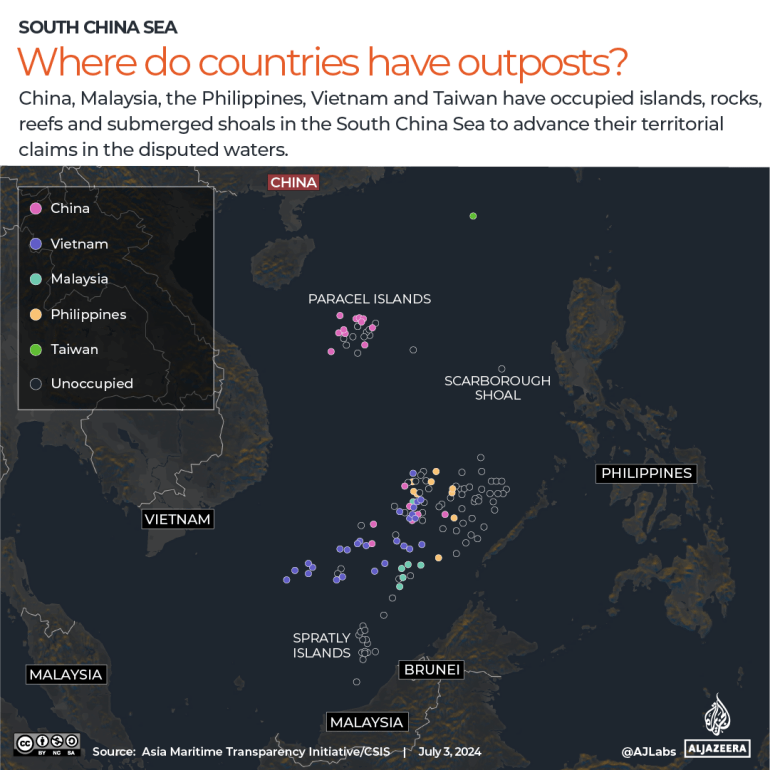
China’s military build-up in the South China Sea
Although countries in the South China Sea have carried out reclamation at the sites they occupy, the scale of China’s artificial island-building and militarisation has far exceeded that of other claimants. Since 2013, China has created 3,200 acres (1,290 hectares) of new land in the Spratlys, according to the CSIS, and constructed ports, lighthouses and runways on the newly built islands.
China now has four large outposts with 3,050-metre (10,000-foot) runways in the South China Sea. They are Woody Island in the Paracels and Fiery Cross Reef, Mischief Reef and Subi Reef in the Spratlys.
According to CSIS, China has deployed substantial military assets to these islands, including anti-air and antiship missiles, sensing and communications facilities, and hangars capable of housing military transport, patrol and combat aircraft.
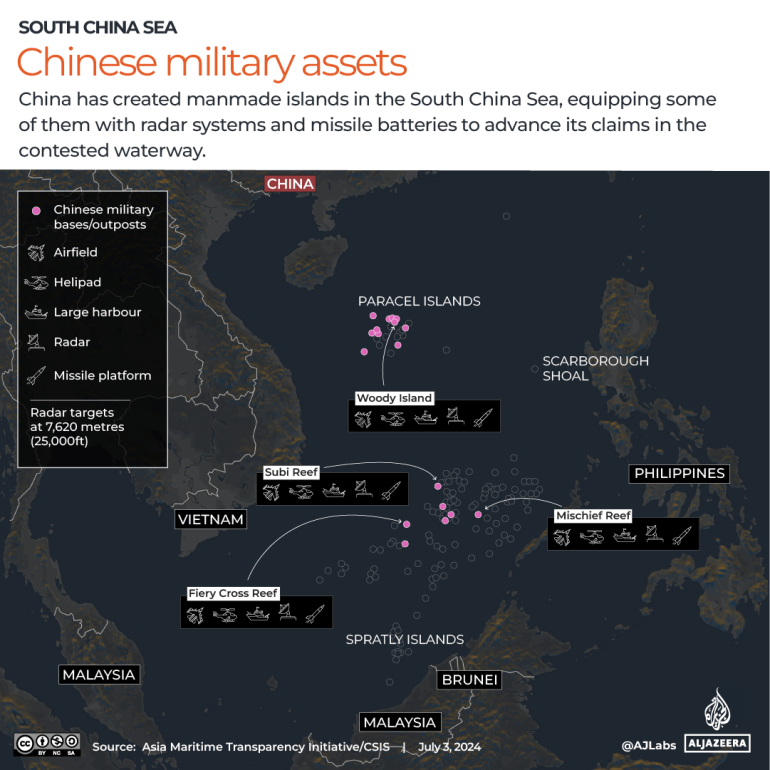
Why is the South China Sea so important?
The sea is one of the world’s most economically important waterways, with cargo worth an estimated $3.4 trillion shipped through it every year.
The waters also contain rich fishing grounds that provide for the livelihoods of millions of people across the region.
According to the US Energy Information Administration, the South China Sea also contains about 11 billion barrels of oil rated as proved or probable reserves and 190 trillion cubic feet (about 5.38 trillion cubic metres) of natural gas. Those unexploited hydrocarbons could be worth $2.5 trillion.
Chinese vessels have clashed with or engaged in standoffs with survey ships from other countries, including Vietnam, the Philippines and Malaysia, disrupting their attempts to exploit those resources.
In September, Malaysian Prime Minister Anwar Ibrahim promised his country would not bow to Chinese demands to stop its oil and gas exploration in waters where it claims sovereignty off the Malaysian state of Sarawak. In 2020, the Diplomat magazine reported that Vietnam cancelled contracts with two Spanish and Emirati oil companies amid pressure from China and agreed to pay $1bn in damages. And in 2012, Vietnam warned China to halt efforts to develop areas that it had already awarded to companies including Exxon Mobil Corp and OAO Gazprom.
All in all, for China, control of the South China Sea would allow it to dominate a major trade route and improve its energy security. It could also allow it to deny access to foreign military forces, particularly from the US.
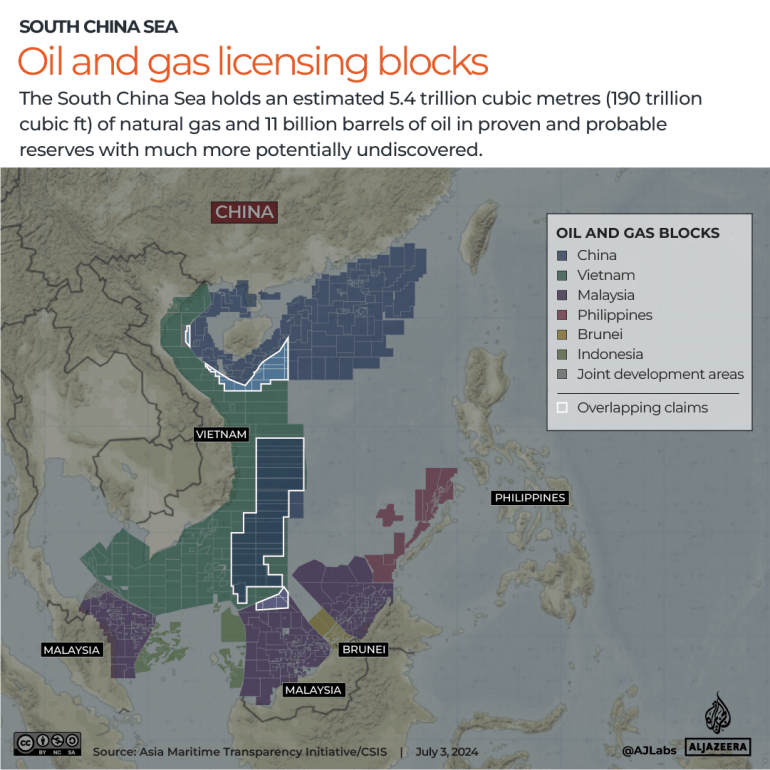
Increasing clashes
In recent decades, tensions have been the greatest between China, Vietnam and the Philippines.
In 1974, the Chinese seized the Paracels from Vietnam, killing more than 70 Vietnamese troops, and in 1988, the two sides clashed in the Spratlys, with Hanoi again losing about 60 sailors. The Philippines’ most contentious disputes with China have centred on Scarborough Shoal, Second Thomas Shoal, and most recently, Sabina Shoal.
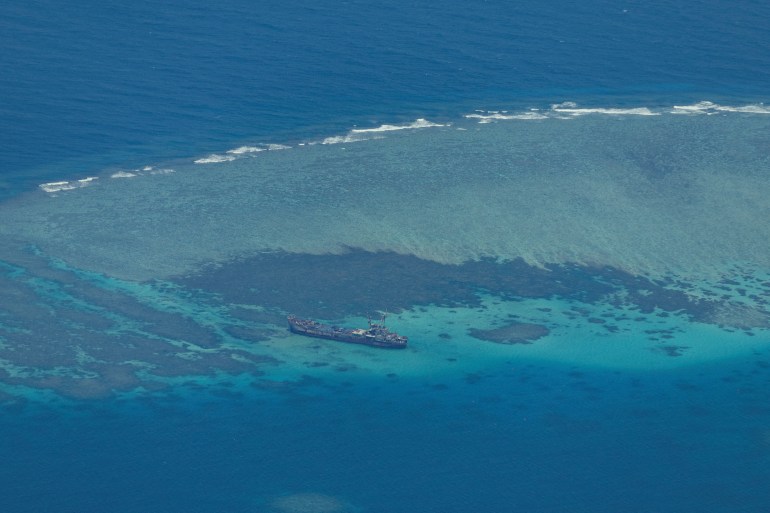
In 2012, China seized Scarborough Shoal from the Philippines following a two-month standoff, and in recent years, Chinese coastguard and maritime militia vessels have attempted to block boats supplying food and water to troops garrisoned on a Filipino ship deliberately grounded on Second Thomas Shoal in 1999. The Chinese side has used tactics including boat rammings, military-grade lasers and water cannon, according to the Philippines.
Here’s a timeline of the major incidents: